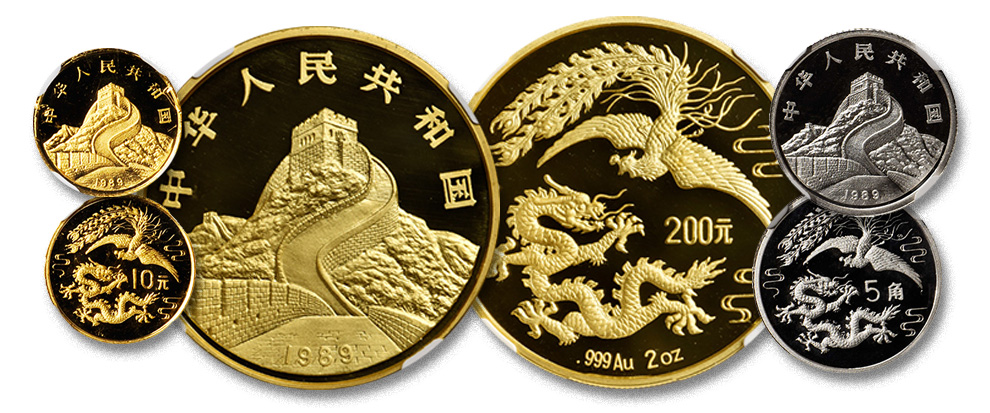
Animal iconography has long played an important role in Chinese art, with the fauna associated with the Lunar New Year being just one aspect. While the dragon—one of the most iconic images associated with Chinese culture—is a part of this lunar cycle, another—the phoenix—is not. In many East Asian mythologies, the fènghuáng (in Chinese) or hō-ō (in Japanese) represents an analog to the western phoenix. It was viewed as a bird which reigned above all other birds, with fèng being the male and huáng being the female. Eventually, the two were combined into a singular feminine concept, that was often positioned opposite a dragon, traditionally associated as male. As such, the pair represented the emperor (dragon) and the empress (phoenix). Following the end of the Empire and the creation of the Republic, this iconography was continued on the "Twelve Symbols national emblem," where the ancient Chinese symbols of the "Twelve Ornaments" were presented, with the dragon and phoenix acting as the supporters in this pseudo coat-of-arms. This was even mirrored in some coinage of the period as well as previously in charms from late in the Qīng Empire.
Given the popularity of the modern coinage program in China, led by the incredibly successful Panda series, a "Dragon & Phoenix" type was proposed in 1989, featuring the dragon to the lower left and the phoenix flying above to the upper right. The reverse, departing from the Temple of Heaven on the Panda series, exhibits a portion of the Great Wall. This overall design was formally adopted and struck in a variety of denominations for 1990, in both gold and silver. The year prior, however, a small handful of incredibly rare pattern issues served as prototypes of the proposed designs; all are extremely desirable and wildly collected in today’s market. Our Official Auction of the Hong Kong Show this May will present not just one of these rare 1989 patterns, but three: a gold 200 yuan (graded NGC PROOF-68 Ultra Cameo), a gold 10 yuan (graded NGC PROOF—Damage), and a silver 5 Jiao (graded NGC PROOF-69 Ultra Cameo). Though the 1990 versions of these artistic pieces aren’t difficult to find, the 1989 pattern issues are quite the opposite. Two of these three pattern lots are accompanied by their 1990 counterparts, allowing comparison between the two. Given the popularity of the Chinese issues, especially rarities from modern series such as these, we expect that competition will be robust and spirited.
To view our upcoming auction schedule and future offerings, please visit StacksBowers.com where you may register and participate in this and other forthcoming sales.
We are always seeking coins, medals, and pieces of paper money for our future sales, and are currently accepting submissions (until May 4th) for our CCO (Collectors Choice Online) auction in June 2020. Following that, our next larger format sales will be our Official Auction of the ANA World’s Fair of Money and our Official Auction of the Hong Kong Show, both in August 2020. If you would like to learn more about consigning, whether a singular item or an entire collection, please contact one of our consignment directors today and we will assist you in achieving the best possible return on your material.





